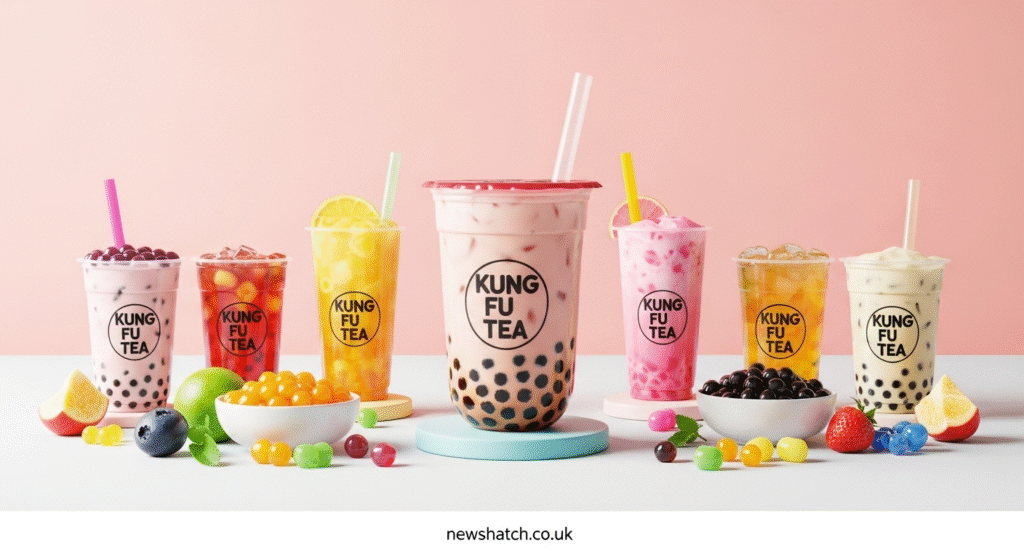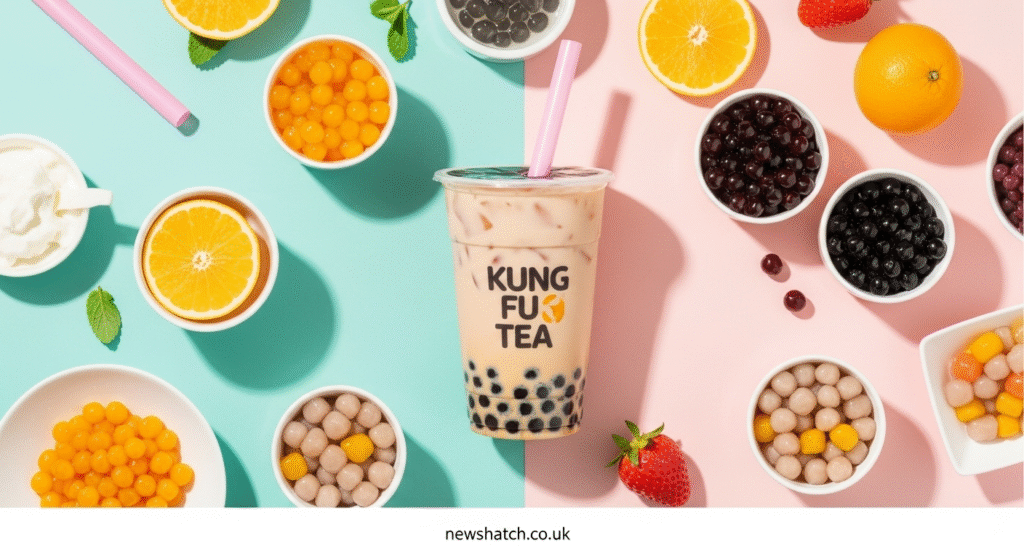Introduction
If you’ve ever heard the phrase kung fu tea, you might picture martial artists sipping tea after training, or a trendy drink shop downtown. But the truth goes far deeper. Kung fu tea is an ancient Chinese tea ceremony that blends mindfulness, skill, and tradition into every cup. And while it certainly shares its name with martial arts, the connection is more about discipline and practice than fighting styles.
In this article, we’re going to dive into everything you need to know about kung fu tea—its fascinating history, how it’s prepared, the cultural significance, the health benefits, and even how you can enjoy it at home without being an expert. We’ll also talk about why this practice, which has existed for centuries, is still so relevant today.
If you’ve been curious about kung fu tea but felt intimidated by fancy tea sets or traditional rituals, don’t worry. By the end of this guide, you’ll feel not only informed but also inspired to try it yourself. Let’s start by unraveling where kung fu tea comes from and why it has stood the test of time.
What Exactly Is Kung Fu Tea?
Kung fu tea, also called gongfu cha, isn’t a specific type of tea. It’s a method of brewing tea that emphasizes precision, patience, and enjoyment. The term “kung fu” doesn’t mean fighting here—it translates to “skill achieved through hard work.” When you hear kung fu tea, think of it as the “skillful brewing of tea.”
The style originated in southern China, especially in the regions of Guangdong and Fujian. Today, it’s not only practiced across China but also celebrated worldwide in tea culture circles.
Here’s what makes kung fu tea stand out:
- Multiple short steeps: Instead of one long brew, the same leaves are steeped several times, each producing a distinct flavor.
- Special teaware: Small tea pots, cups, and trays are used to control heat and preserve aroma.
- Focus on experience: It’s not just about drinking tea. It’s about appreciating aroma, flavor layers, and even the sound of water being poured.
Think of it like a slow, mindful ritual—part art, part science, and part relaxation.
Why Is It Called “Kung Fu” Tea?
The word “kung fu” immediately makes most of us think about martial arts movies. But in Chinese culture, kung fu has a broader meaning: it refers to any skill mastered through discipline and practice. Tea brewing is considered an art that, just like martial arts, requires patience and dedication.
So, the name isn’t about fighting. It’s about putting effort and care into something until it reaches perfection. Brewing tea might seem simple, but kung fu tea masters know that water temperature, timing, tea leaf quality, and even pouring techniques all make a difference.
A Brief History of Kung Fu Tea
Kung fu tea traces its roots back centuries, with much of its growth happening during the Ming Dynasty. While tea drinking in general was already widespread in China, kung fu tea refined the way tea was made to elevate flavor and create a shared cultural experience.
The Chaoshan region of Guangdong is often credited with formalizing gongfu cha. Locals valued oolong teas and discovered that steeping them in small pots multiple times brought out richer, layered flavors. From there, the practice spread to Fujian and Taiwan.
For centuries, kung fu tea remained not only a way of drinking but also a way of connecting with others. Sharing tea was an act of hospitality, respect, and friendship. Even today, sitting down for gongfu cha is seen as a gesture of bonding and mindfulness.
The Philosophy Behind Kung Fu Tea
One of the best things about kung fu tea is that it’s more than just a beverage. It embodies a philosophy of mindfulness and intention.
- Patience: Every step requires time and care. You can’t rush the process.
- Mindfulness: The act of pouring, smelling, sipping—all of it keeps you present.
- Balance: Each cup seeks harmony between heat, fragrance, and taste.
- Respect for tradition: It connects you with centuries of culture and artistry.
In a world that’s always rushing, kung fu tea is an invitation to slow down.

The Teaware of Kung Fu Tea
Tea masters say that kung fu tea begins with the right tools. While you don’t need to buy an elaborate set to enjoy this ritual, knowing the traditional items will help you appreciate it better.
- Yixing Clay Teapot: The porous clay enhances flavor and absorbs the essence of tea over time.
- Gaiwan: A lidded bowl, often used in place of teapots.
- Fairness Pitcher (Cha Hai): Ensures tea poured into cups is evenly brewed.
- Small Cups: Let you taste each steep fully rather than gulping it down.
- Tea Tray: Catches spills and keeps the process neat.
- Tea Tools: Spoons, tongs, and strainers for precise handling.
Each piece matters because it helps control temperature and maintain a smooth ritual.
How Kung Fu Tea Is Made
Making kung fu tea might sound complex, but the steps are straightforward once you know them.
Step 1: Heat the Teaware
Pour boiling water into your teapot, cups, and pitcher to warm them. This prepares the pieces and helps preserve tea flavor.
Step 2: Add the Tea Leaves
Place loose leaves, usually oolong, into the teapot. Use about one-third of the pot’s volume.
Step 3: The First Rinse
Pour hot water over the leaves, then quickly discard this first brew. It washes and awakens the leaves.
Step 4: First Steep
Refill the teapot with hot water. Let it steep for just 20–30 seconds. Kung fu tea uses short, precise steeps.
Step 5: Pour and Share
Pour the tea into the fairness pitcher, then serve in tiny cups. Sip slowly and note the aromas.
Step 6: Repeat
Steep the same leaves several more times. Each infusion will taste slightly different, offering new notes and depth.
This is the beauty of kung fu tea—every round tells a new story.
What Types of Tea Are Best for Kung Fu Tea?
While technically any tea can be used, some varieties are more suited to this brewing style.
- Oolong Tea: Especially from Fujian and Guangdong. Offers complex, changing flavors.
- Pu-erh Tea: Aged tea with earthy, deep notes.
- Black Tea: Works well, especially high-quality leaves.
- Green Tea: Less common in kung fu brewing since it requires cooler water.
If you’re starting out, oolong is the best choice. It’s forgiving, flavorful, and perfect for multiple infusions.
The Health Benefits of Kung Fu Tea
Beyond the cultural experience, kung fu tea also offers plenty of health benefits:
- Supports digestion after meals
- Rich in antioxidants that protect against cell damage
- Can boost metabolism and aid in weight control
- Encourages relaxation and reduces stress
- Promotes hydration in a more mindful way
But perhaps the biggest benefit is mental. The ritual itself slows you down, helping you create a mindful break in your day.
Kung Fu Tea in Modern Times
When you think of kung fu tea today, you may also think of the popular American bubble tea brand that goes by the same name. While fun, the chain’s name is just inspired by the cultural idea—its drinks are very different from traditional gongfu cha.
Yet, traditional kung fu tea is making a comeback, especially among younger generations in Asia and Western tea enthusiasts. Many people are drawn to it for its meditative qualities. In a way, it’s like yoga or meditation—except with tea.
How You Can Practice Kung Fu Tea at Home
You don’t need a full ceremonial setup to enjoy kung fu tea at home. Here’s how you can try it simply:
- Buy a small gaiwan or teapot (affordable versions are widely available).
- Choose a good-quality loose oolong tea.
- Heat your teaware before brewing.
- Use short steeps, and re-steep leaves multiple times.
- Focus on the taste, aroma, and process—don’t rush.
If you stick with it, you’ll start to notice the subtleties in flavor and find the ritual itself calming.
Common Mistakes Beginners Make
If you’re new to kung fu tea, don’t worry about perfection. But here are some common pitfalls to avoid:
- Using too much or too little tea
- Steeping too long and making the tea bitter
- Using water that’s too hot for green teas
- Ignoring the ritual and rushing the process
The key is practice—just like kung fu martial arts, it gets better the more you do it.
Conclusion
Kung fu tea isn’t just about drinking tea—it’s about slowing down, paying attention, and connecting with something timeless. From the rich history of southern China to modern tea lovers around the world, this ritual continues to bring joy and meaning into people’s lives.
If you’ve ever wanted a way to create small, mindful moments for yourself, there’s no better place to start than with kung fu tea. So, would you try brewing your own session this week?
FAQs
1. What does kung fu tea taste like?
It depends on the tea you use, but oolong often tastes floral, toasty, or slightly fruity.
2. Do I need special tools to try kung fu tea?
Not necessarily. You can start with a simple gaiwan or small teapot.
3. How long does it take to make kung fu tea?
Just 10–15 minutes for a basic session, though longer if you want to savor it fully.
4. Can I practice kung fu tea with green tea?
Yes, but be careful with lower brewing temperatures to avoid bitterness.
5. Where can I buy teas for kung fu brewing?
Specialty tea shops and online stores often carry high-quality oolong and pu-erh teas.
6. Is kung fu tea the same as bubble tea?
No. Bubble tea is a modern drink with tapioca pearls, while kung fu tea is a traditional brewing method.
7. How many times can you steep tea leaves in kung fu tea?
Leaves are usually steeped 5–7 times, sometimes more with high-quality tea.
8. What water temperature should I use?
Generally around 90–95°C for oolong, lower for green teas.
9. Does kung fu tea contain caffeine?
Yes, but often less than coffee. The caffeine level depends on the tea type.
10. Is kung fu tea healthier than regular tea brewing?
It can be, since multiple shorter steeps often extract antioxidants more effectively while keeping flavor smooth.
Also Read: Click Here
